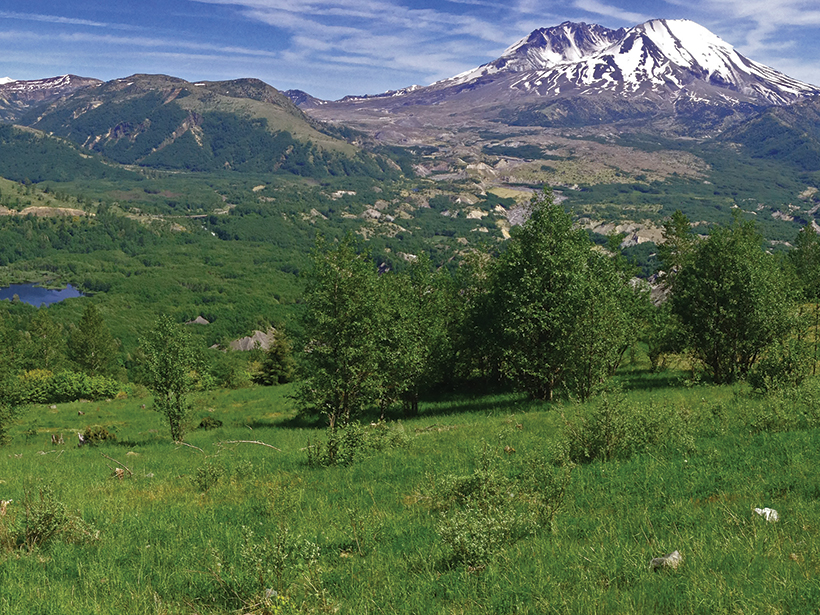Visualizing Science: How Color Determines What We See. Obviously, this feature has startlingly beautiful illustrations. But that’s not the only reason I like it. It’s a timely reminder of how we interpret the world around us with our eyes and how much we understand or miss through the embedded coding and expectations we carry with us. And it’s a reminder of the art of science, which is a truly human endeavor. Plus it’s a good read, with a breadth of information that any scientist should digest before tackling their next AGU poster.
—Naomi Lubick, International Editor
Power Outages, PG&E, and Science’s Flickering Future.
One of the most important issues we cover here at Eos is how scientists continually adapt to our changing world. In this two-part series, Jenessa Duncombe reported on how the scheduled blackouts in California due to wildfires affect science experiments that can’t just be paused and restarted. This isn’t a one-time issue: The area’s aging power grid will likely have to be shut down periodically over the next decade. Scientists will need to adapt—as they also adapt to new circumstances like the pandemic—and I look forward to more Eos coverage that reports on solutions to these challenges.
—Heather Goss, Editor in Chief
Basalts Turn Carbon into Stone for Permanent Storage.

This was by far my favorite article to write, from start to finish. It began with a trip to Iceland for a totally separate reason, but while I was there I had the opportunity to visit the Hellisheiði Geothermal Power Station and learn about its operation. The seed for the article was a throwaway line during a tour and one sentence on a display: “We’re researching new ways to lock away the carbon waste in the ground.” And I went, “Huh, that sounds neat. What’s that?” What followed you can read for yourself in the article, but the experience drove home two important lessons for me: One, writers should keep their minds open to new ideas everywhere they go because you never know where you’ll find inspiration. And two, to overcome the climate crisis, society needs to not only drastically cut our greenhouse gas emissions but also invest in new, innovative ways to reverse the damage we’ve already done.
—Kimberly Cartier, Staff Writer
Basalts Turn Carbon into Stone for Permanent Storage. I have to agree with Kim on this one—I loved this story about a new carbon-storing technology. Kim’s whip-smart reporting and keen ear found this story on an international trip, and I’m so glad she did. It’s rare that we get to talk about uplifting progress when writing about climate change, so Kim’s story stood out as both novel and fascinating. None of us knows what the next decade will bring (or which technologies will bring change), but I know one thing for sure: We need detailed reporting like this on climate change solutions. This is just one of the many reasons I feel lucky to have Kim on staff here at Eos.
—Jenessa Duncombe, Staff Writer
Lessons from a Post-Eruption Landscape.

Retrospective articles about major disasters often amount to retellings of the same series of occurrences leading up to, during, and immediately after the main event. These can be interesting and informative, for sure, particularly when they offer new details or perspectives, but in the case of the May 1980 eruption of Mount St. Helens, so much has been written that it’s difficult to find fresh ground. This article takes a different tack from most, however, focusing on the eruption’s catastrophic effects on the surrounding landscape and the 4 decades of critical research that have gone into studying the recovery and evolution of the slopes, streams, and life around the volcano. As the authors note, “Long-term research on the biophysical responses at Mount St. Helens has provided important new insights, challenged long-standing ideas, and provided many societal benefits,” such as informing our understanding of hazards created by the massive quantities of ash and sediment washed down local rivers.
—Timothy Oleson, Science Editor
During a Pandemic, Is Oceangoing Research Safe? This was by far my favorite story to report on. I wanted to capture what it felt like to be in the field when the coronavirus outbreak accelerated in March, so I looked around for scientific expeditions under way. I was fortunate enough to find Rainer Lohmann, an oceanographer in the middle of the Atlantic Ocean just off Cape Verde, to share his story with me. I will never forget talking with Lohmann over Skype while his ship idled off the island, hoisting its quarantine flag before heading to port. Lohmann—and so many other scientists and researchers—found themselves in unimaginable situations, and they had to improvise on the fly to stay safe. Even though many of us were sheltering at home during this time, we can all relate to navigating the uncharted waters of the pandemic.
—Jenessa Duncombe, Staff Writer
Deepwater Horizon and the Rise of the Omics.

One of the most interesting stories we’ve published this year, this feature delves into genomics research into microbial communities in the Gulf of Mexico following one of the world’s worst marine oil spills. Before reading the article, I’d thought of gene sequencing only in relation to biology and medicine, so I was fascinated to learn about its use in microbiology and about microbes, including a newly discovered “superbug,” that consume the components of oil, with implications for response to and mitigation of future oil spills. The article is well written and, though not a supereasy read, understandable to this nonscientist.
—Faith Ishii, Production Manager
Don’t @ Me: What Happened When Climate Skeptics Misused My Work. This article is at the top of my “couldn’t stop scrolling” list for Eos this year, and I’ve read it multiple times. Many of us have heard tales of climate scientists targeted by deniers for just doing their regular job. Most of those stories are about research professors, but what about when this happens to early-career scientists and students? One excerpt that affects me every time is this: “I found myself scrolling through pages of posts jeering at climate scientists and dismissing science as politically motivated propaganda. I felt sick to my stomach that my work had become part of messaging targeting legitimate climate science.” Lucas Zeppetello’s story invokes emotion and offers practical advice for anyone found in the same situation.
—Kimberly Cartier, Staff Writer
Human Brains Have Tiny Bits of Magnetic Material. Pre-COVID, this fascinated me. Geohealth: Science’s First Responders. During COVID, this made me grateful for geohealth researchers.
—Melissa Tribur, Production Specialist
Are We Seeing a New Ocean Starting to Form in Africa?
I love this story about Ethiopia’s Erta Ale volcano from Erik Klemetti—it’s an intriguing and fascinating introduction for nonscientists and an endless conversation starter for geoscientists. Plus, you know, hot lava.
—Caryl-Sue, Managing Editor






